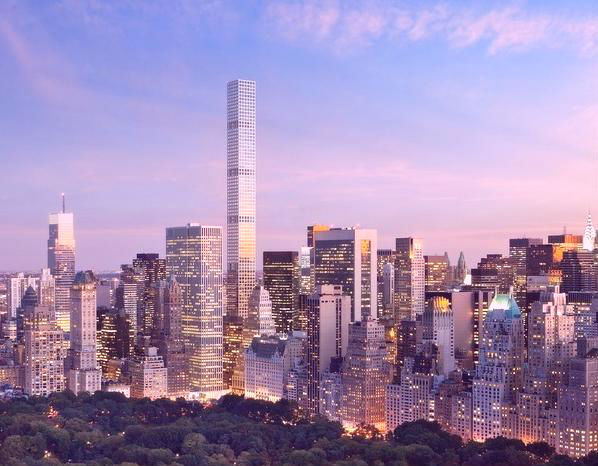
432 Park. Source: Macklowe Properties / CIM. (Fair use.)
Matthew Gordon Lasner, who teaches at Hunter College, believes they should. (He also provides a nice, succinct history of residential shared-ownership arrangements in the United States.) There has been an uptick recently in the amount of ink spilled about luxury condominiums as cash-stashes, rather than residences. The Times has been running a series called ‘Towers of Secrecy’, and New York magazine had a long-form article last June about the same phenomenon. The statistic that struck me most from the New York article:
The Census Bureau estimates that 30 percent of all apartments in the quadrant from 49th to 70th Streets between Fifth and Park are vacant at least ten months a year.
So, in a city with no affordable market housing, much the best residential real estate sits almost completely vacant. Wonderful. If the laws can be tweaked to discourage this, they should be. Lasner suggests limits on the numbers of absentee or anonymous buyers — I think those kinds of measures could help.
Still, the results of this development trend are a mixed bag for New York City, even in the realm of social equity. When I worked on Mount Laurel analysis at Rutgers (for New Jersey’s constitutionally-mandated affordable housing programs), one of the factors that we analyzed was filtering — or, the tendency of new, market-rate units to take some of the price pressure off of the existing housing stock. In theory, at least, a larger number of units in a particular region will bring down the degree of competition for housing units, across the board. So, even the development of incredibly expensive luxury units ought to have some knock-on effect for housing affordability in the local market, by taking wealthy buyers out of competition for (and gentrification of) existing units in the same city.

111 West 57. Source: SHoP Architects. (Fair use.)
Finally, on a purely aesthetic level, I do like the architecture of many of the city’s new sliver skyscrapers. Vishaan Chakrabarti, in particular (who led the design of 111 West 57th Street, above), has an incredible eye, and a vision of urbanism that goes far beyond luxury investment units. Technology allows for the development of slender, elegant towers that were physically impossible in the past. They represent the forefront of engineering and design, and some of them are truly striking. Beautiful architecture — even if it contains private spaces — can still bring value to everyone who spends time in the city.

